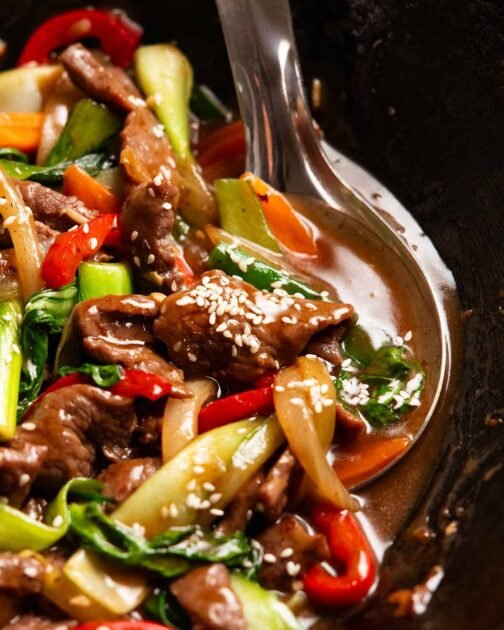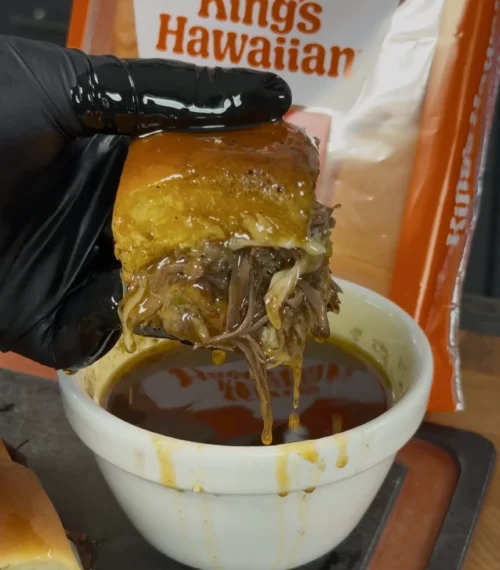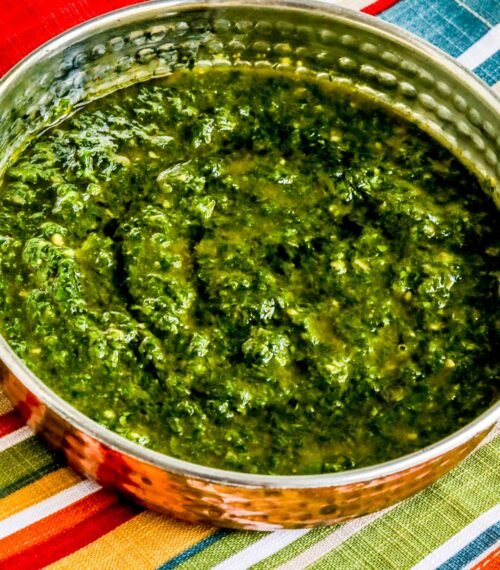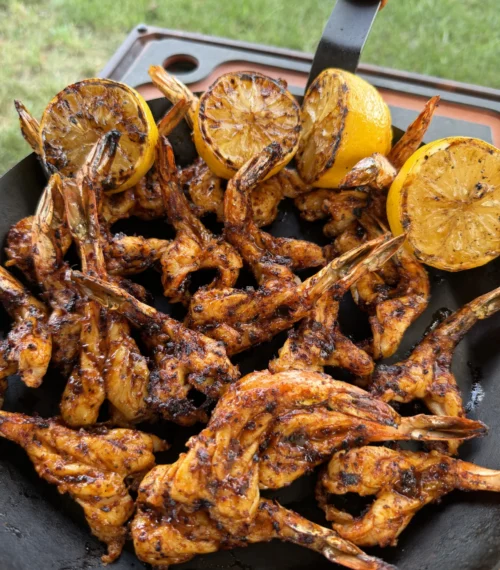This Beef Stir Fry is made with a simple but super flavourful, classic Chinese stir fry sauce that tastes just like you get at proper Chinese restaurants. I use lots of colourful vegetables and these days, I always velvet the beef. No more dry chewy beef in my stir fries!

Chinese Beef Stir Fry
I first shared this Beef Stir Fry recipe 10 years ago (!!), calling it my “go-to.” And it still is (I make stir fries frequently!) but over the years the recipe has evolved a bit, so I thought I’d share my current recipe. The flavour’s the same, but I’ve refined the process a little. More importantly, these days, I always velvet my beef so it stays beautifully tender.
Have you ever noticed how the meat in Chinese restaurant stir fries is so incredibly soft, and how your stir fries at home are just never the same? The secret is tenderising the meat – a method called velveting.
There’s a few different ways to do it but for small-batch home cooking, I find the most practical is the method that involves coating the beef in a little baking soda which breaks down the fibres so it stays succulent and velvety even after high-heat cooking for a prolonged period of time. A tiny extra step that makes a huge difference – try it once and you’ll never look back!
> For more on Velveting, see here (yup, I’m such a dork wrote a whole post about it!)



Ingredients in Chinese Beef Stir Fry
Here’s what I put in my beef stir fry. There’s lots of options for beef cuts, and feel free to substitute the vegetables with whatever you want, have or like. That’s the beauty of stir fries – the flexibility!
1. velveted beef
I like to use steak cuts for stir fries for the same reason people like eating them as steaks – good beefy flavour and ideal for cooking fast. But even with steak cuts, I still tenderise. Paper thin slices of beef cook in 90 seconds whereas stir fries take closer to 6 minutes – fast, but the beef is still overcooked which means it’s chewy and tough.

Baking soda – A small amount (just 1/2 teaspoon) mixed with the beef tenderises it so it stays soft. Without, the beef will overcook and become tough. A tried and proven tenderising method used liberally in my Asian recipes!
Favourite beef cut for stir frying – My favourite cut for stir fries here in Australia is rump though I’d use flank if it was more readily available and thicker cut like it is in the US. Both these have great beefy flavour and good eating texture but is by no means tough, and is around the middle of the range when it comes to cost.
Nowadays, I usually buy rump steak in roast form (aka rump cap, sirloin cap, picanha or coulotte) – better value than steak and you can slice it into larger, restaurant-style pieces instead of thin strips. I cut the roast into smaller portions – pictured above – and freeze.
Other great steak cuts for stir fries – Basically anything you’d throw on the grill! Scotch fillet (boneless rib eye) is excellent but pricier (I’d rather enjoy it as steak), porterhouse/sirloin (US: New York strip) or any other cut of steak that you’d cook as steak.
Slow cooking cuts – like chuck, oyster blade, gravy beef – can also be used, just use a smidge more baking soda and tenderise for a touch longer (1/2 teaspoon heaped for 35 minutes). The main difference with stewing cuts is that the beef flavour is not as strong as steak cuts, though bear in mind there’s lots of lovely tasty sauce smothering this stir fry!
Other proteins – Absolutely feel free to use any other protein you like! Here’s a guide on tenderising:
Chicken thighs – no need to tenderise
Chicken breast and tenderloin – 20 minutes
Pork and lamb quick pan fry cuts (chops/steaks) – 20 minutes
Pork and lamb slow cooking cuts / large roasts (shoulder, neck, leg) – 30 minutes
Find the full list of meat cuts and tenderising times on page 170 of my cookbook Tonight.
2. stir fry sauce
Here’s what goes in my Stir Fry Sauce. Handy shortcut – Use 5 tablespoons of Charlie, my All-Purpose Stir Fry Sauce instead!

Light soy sauce – You can substitute with an all purpose soy sauce. But not dark soy sauce – flavour is too strong and the colour is too intense! More on which soy sauce to use when here.
Oyster sauce – A staple Asian sauce that adds complexity, flavour and umami all at once. Made from oyster extract that is sweet, salty, thick and pungent, but doesn’t taste oyster-y or fishy at all once cooked. Can be substituted with shellfish free alternative – vegetarian “oyster” sauce, even found at regular grocery stores these days.
Chinese cooking wine (“Shaoxing wine”) – essential ingredient for making truly “restaurant standard” Chinese dishes, adds depth of flavour into sauces. Substitute with mirin, cooking sake or dry sherry. Non alcoholic substitute – substitute half the water with low sodium chicken stock/broth.
Sesame oil – toasted sesame oil is brown and has more flavour than untoasted (which is yellow). Default sesame oil sold in Australia is toasted, untoasted is harder to find.
Sugar – to get the right balance of flavour in the sauce.
Cornflour / cornstarch – This makes the beef cook so it has a thin film-like coating on it which makes it sort of slippery, just like you get at Chinese restaurants.
White pepper which is the traditional pepper choice in Asian cooking. Substitute with black pepper.
3. vegetables
Here are the vegetables I put into my stir fry, for colour, flavour, and convenience (easy to cut, no need to steam separately – like with broccoli). 🙂

Garlic and onion – Essential aromatic flavour base that flavours the oil at the start.
Bok choy – Leafy Asian green, one of my favourites, and typically not to pricey year round. Cut the stem from the leafy part as they go into the stir fry at different times as the stem takes longer to cook.
Green onion – I like the extra hit of freshness from tossing a handful of green onion in at the end, and it’s no effort to chop into batons. Note: the firmer white end goes into the stir fry earlier than the softer green part.
Carrot and red capsicum (bell pepper) – Both these are a firm stir fry favourite for the pop of colour!
Other vegetables – Use what you want! You’ll need to pre-cook vegetables like broccoli and cauliflower else they will take too long to cook in the stir fry. TIP: There is a handy matrix on page 172 of my cookbook Tonight for how to cut vegetables and when to add vegetables into the pan for stir fries. It’s really useful!

How to make this Chinese Beef Stir Fry
The beef takes 20 minutes to velvet (tenderise). Use this time to chop the vegetables, make the sauce and get the rice cooking!
1. VELVETING THE BEEF

Slice the beef thinly, around 3 – 4mm / 1/6″ thick, around 4 – 5 cm / 2″ long.
Thin beef! 🙂

20 minute marinade – Toss the beef slices with the baking soda. I find it easiest to use my fingertips. Then set it aside for 20 minutes, no longer. If you leave the beef for too long, it can get over-tenderised and be freakishly tender, which is not very pleasant. I find this is a common problem at cheap ‘n cheerful local Chinese joints, a little too enthusiastic about tenderising!
Rinse the baking soda off using a colander under cold tap water. Shake off excess water then blot excess off using paper towels. It doesn’t need to be 100% dry, just not soaking wet. Now it’s ready to use!
2. COOKING THE STIR FRY
Golden rule with stir fries – add the vegetables into the wok or pan based on the length of time it takes to cook. Harder vegetables in first, leafy ones in last. We want our stir fry with crisp-tender rather than limp-watery vegetables!

Sauce part 1 – Mix all the Sauce ingredients except the cornflour.
Season beef – Measure out 1 1/2 tablespoons of the sauce and mix into the tenderised beef to coat it in flavour.

Sauce thickener – Mix the cornflour into the remaining sauce until it’s lump-free. Then mix the water in.
Aromatics first – Heat the oil over high heat in a wok or large non-stick pan. Add the onion and garlic, cook for 10 seconds until the garlic is light golden – don’t let it burn, garlic gets bitter!

Beef – Add the beef and stir constantly for 1 1/2 minutes or until it changes from red to brown.
Firmer vegetables first – Add the carrots, capsicum, bok choy stems and white part of green onions. Stir for 1 1/2 minutes – the vegetables should be still crisp but coated in the tasty flavours.

Sauce it! Give the sauce a quick stir to agitate the cornflour settled on the base, then pour it in and give it a good stir.
Leafy vegetables last – Once the sauce starts bubbling, add the bok choy leaves and green part of the green onions. Toss for 1 minute until the sauce thickens and becomes glossy, coating all the vegetables and the bok choy leaves are just starting to wilt. Then it’s ready – serve over rice!

Did I mention that there’s a good amount of sauce for excellent rice soakage???

So there you go. My go-to everyday Beef Stir Fry.
I’ve said that before, I know – but this time I really mean it! It’s the version that ticks every box for me right now: tender beef using a cut that’s not too expensive, glossy sauce, lots of vegetables (I feel virtuous!) and a tasty sauce.
I don’t expect to change it again…….but don’t crucify me if I do!
Love to know what you think if you try this. Hope you enjoy! – Nagi x
FAQ Beef Stir Fry
The main change I made to the original recipe published in December 2015 was to make tenderising the beef a proper step in the recipe rather than an optional note buried at the bottom. Because these days, it’s something I always do these days.
I also used to mix cornflour into the sauce right from the start and use a bit of that sauce to season the beef. It worked fine, but the beef would turn a little “tacky” when cooked. Not a disaster, just not ideal. Now, I’ve fixed that by splitting the process into two steps: first mix all the sauces together and set some aside to flavour the beef, then add the cornflour and water to the remaining sauce. The beef fries up a bit better doing it this way!
YES YES YES!! Use 5 1/2 tablespoons of Charlie and skip the sauce and cornflour. Proceed with the recipe as written (including using 1 1/2 tablespoons for the beef – so mix 1 1/2 tablespoons into the beef and put 4 tablespoons into the stir fry).
Yes, by using tamari or a certified gluten-free soy sauce.
3 to 4 days in the fridge. However, bear in mind that the sauce will be thinner when reheated because cornflour loses its thickening powder when reheated. The same applies when freezing stir fries.
If you are making ahead intentionally, substitute the cornflour with arrowroot 1:1. This is what we do at RecipeTin Meals as all the meals we make are either packed into containers to be reheated by recipients (fridge or frozen), or put in large bratt pans which are reheated for meal service. If we didn’t use arrowroot, the sauce would be thin and watery when reheated.
Watch how to make it
Hungry for more? Subscribe to my newsletter and follow along on Facebook, Pinterest and Instagram for all of the latest updates.

Easy Chinese Beef Stir Fry
Ingredients
Velveting the beef (tenderising)
Sauce (Note 3)
Sauce thickener
Stir Fry
To Serve
Instructions
Abbreviated recipe
FULL RECIPE
Velvet beef (tenderise)
Cook stir fry
Recipe Notes:
Nutrition Information:
Originally published December 2015. Republished with fresh new photos, new video added and most importantly, Life of Dozer section added!
Life of Dozer
I know this looks like my friend captured a heartwarming moment as Dozer was gazing up at me adoringly….but the truth is a flock of birds was flying overhead.😆






